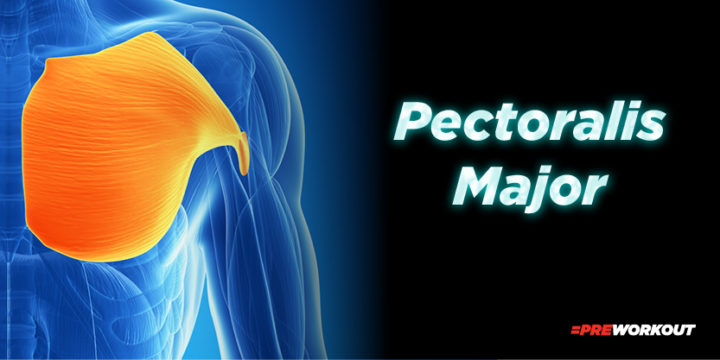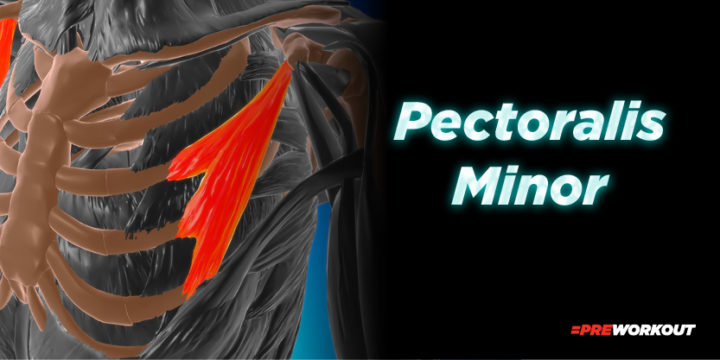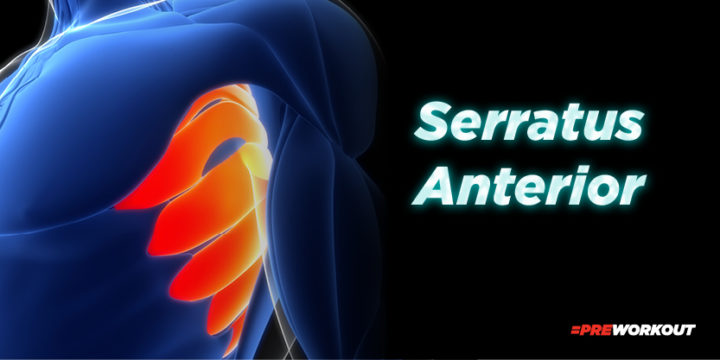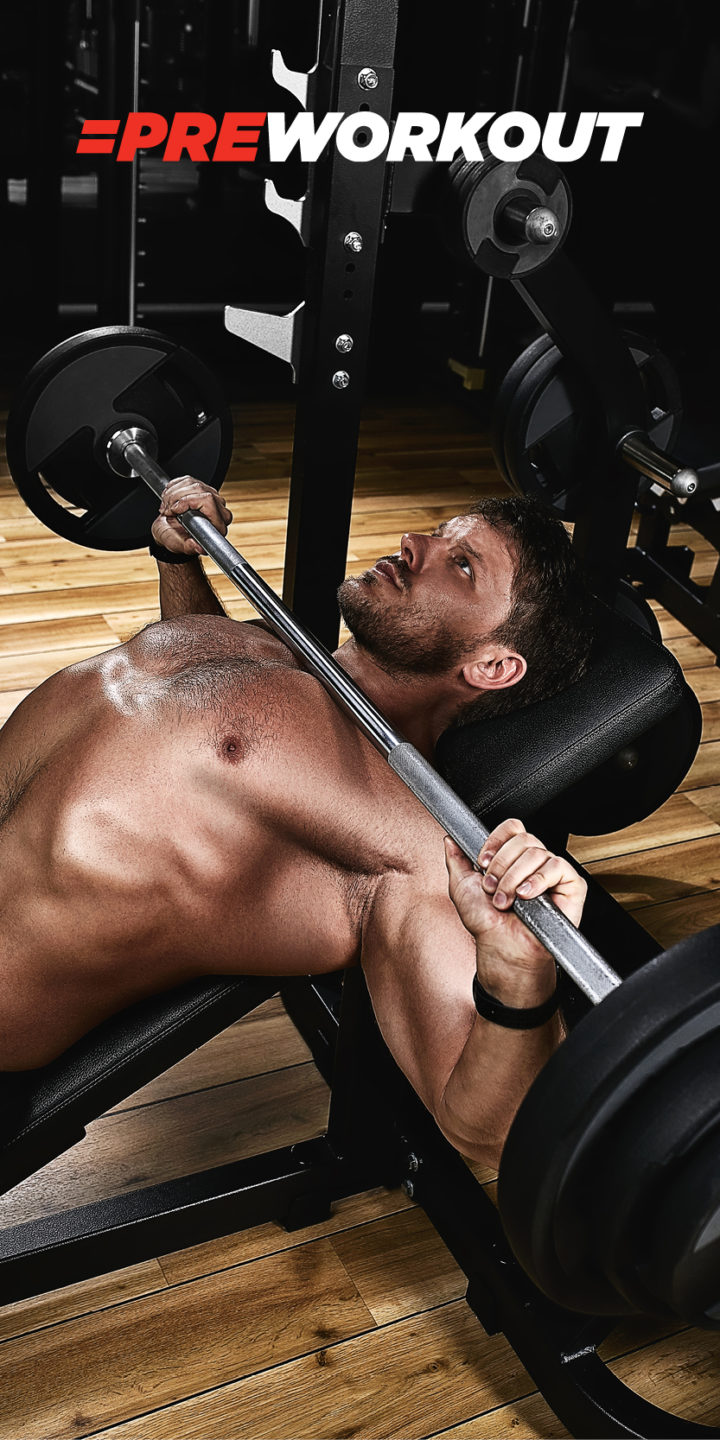It’s Monday, so that means it’s national chest day. You are looking over your training notebook when it hits you. You have been doing the same chest workout for months with little to no results. You know you need to change things, but knowing where to start is complex, with so many exercises to choose from.
Understanding How The Chest Works and What It Does In The Body
Don’t worry. That’s why we’ve put together this guide to help you navigate the world of chest training and find the exercises most effective for your goals. Whether you want to increase your bench press max or build a more impressive chest, we’ve got you covered.
Pectoralis Major

The pectoralis major makes up most of the chest musculature. In fact, it’s what you probably think of when you think of the “pecs .”The pec major is the larger of the two pectoralis muscles and is responsible for the upper arm’s adduction, flexion, and internal rotation. It has two heads: the clavicular head, which originates at the collarbone, and the sternocostal head, which originates at the breastbone and upper ribs. As a whole, the pectoralis major inserts into the humerus.
Pectoralis Minor

The pectoralis minor is a smaller triangular-shaped muscle underneath the pectoralis major. It originates on the third, fourth, and fifth ribs and inserts into the scapula. The pectoralis minor helps to stabilize the shoulder blade and is involved in shoulder depression, which is critical to bench press strength.
Serratus Anterior

Although not technically a chest muscle, the serratus is on the side of the chest and wraps around the ribcage. It helps protract the shoulder blade, which is vital for many pushing movements like pushups and bench presses.
The pectorals are a muscle group with multiple attachment points that require a variety of angles and exercise variation for maximum development. Simple adjustments such as bench angle and grip can affect the most stimulated area of the muscle.
The Best Barbell Chest Exercises
There is no denying the barbell is an excellent training tool, and chest training is no exception. Here are two excellent barbell chest exercises to put into your program.
Barbell Bench Press
Let’s face it, the barbell bench press is one of, if not the most popular barbell exercises you can do. People typically won’t ask how much you can squat, curl, or row, but they will ask how much you can bench.
Although it is often seen as a strength movement, the bench can be an excellent chest builder. No other chest exercise will allow you to move more weight. Take advantage of that and focus on progressively overloading this movement.
The bench can be a safe lift if done correctly, but the bench press can be problematic, like any exercise. Using a lousy technique on the bench press has likely caused more shoulder injuries than any other movement. However, it’s also responsible for more upper-body muscle growth and strength than any other exercise, so let’s not throw the baby out with the bathwater.
Where you grip the bar will largely depend on personal preference and limb length. Generally speaking, having longer arms will require a wider grip. Play around with different grip widths until you find a comfortable position to lift the most weight.
Barbell Incline Bench Press
The barbell incline bench press is an excellent compound exercise that research shows targets the upper part of the chest better than a flat bench [1]. And since most lifters favor flat presses early in their lifting career, a well-developed upper chest is rare. Spending extra time on the barbell incline press will help compensate. It’s well worth your time, too. Having a big upper chest will transform the entire look of your upper body.
The key to the incline bench press is the angle. Based on current evidence, the upper chest receives the most activation at a 30-degree incline [2]. 30 degrees is smaller than you might think. In fact, most incline benches are set at 45 or even 60 degrees. The problem with using that high incline is that the front delt takes over the movement.
If your gym’s barbell incline bench is set at a high incline, you can create a 30-degree angle by putting an adjustable bench in a power rack.
Dumbbell incline presses are great, too.
The Best Chest Exercises With Dumbbells
Next up are chest exercises with dumbbells. Dumbbells are an excellent option for chest training because they allow you a little extra range of motion, work each side individually, and still have high overload potential.
Incline One-Arm Dumbbell Bench Press
The one-arm dumbbell press is a unique exercise most people never do. In reality, it’s just an upper-body pressing movement that works your chest, much like a regular dumbbell bench press.
However, focusing on one side at a time allows you to hone in on the range of motion, tempo, and mind-muscle connection. Also, completing the one-arm variation takes total body tension, or you will fly off the side of the bench. Before jumping into this one, pick a dumbbell a little lighter than you regularly do with a dumbbell bench press.
The hardest part of this exercise is always keeping both shoulders and hips on the bench. The weight is unevenly distributed since you only hold one dumbbell at a time. Use your core to avoid rotating your torso.
You can also do the one-arm variation on a flat bench, but the incline makes it easier to stabilize the torso.
Dumbbell Pullover
The dumbbell pullover is an old-school exercise that Arnold made famous in Pumping Iron. Unfortunately, you don’t see this movement done much anymore. It’s a shame this exercise fell out of style because it’s a unique chest exercise that also works the lats and serratus. The dumbbell pullover is one of the few chest exercises that doesn’t involve pressing, so it’s easy on the elbows.
Maintain a slight bend in your arms during the movement. The key is to maintain the same arm angle throughout the exercise. Try to get a good stretch at the bottom. Use a full range of motion, and flex the chest hard at the top. Finish the move with the dumbbell over your pecs.
It’s unlikely that the dumbbell pullover will be the key reason for increased chest growth. But it’s the perfect exercise to round out a well-designed routine.
The Best Bodyweight Chest Exercises
Bodyweight exercises are often overlooked, but when it comes to chest training, that is a big mistake. Two of the best all-around chest exercises are bodyweight movements.
Pushup
The pushup is one of the most fundamental bodyweight exercises and can be a valuable tool for any training program. It’s so basic it often gets overlooked.
During a pushup, you will fix your hands and feet to the ground, and as you lower yourself down, your scapula is free to move. This is a unique feature compared to almost any other chest exercise. Mastering the pushup is the first step to having a strong upper body.
A common mistake people make during the pushup is allowing their hips to sag. Your glutes and abs should be tight, and your body should be relatively straight throughout the movement. Don’t allow your hips to sag and touch the ground or raise to create an arch. If you are having trouble with this, try squeezing your glutes during the movement.
Grip the floor with your fingertips, and screw your hands into the ground to create more upper-body tension. The added tension will increase shoulder stability, which will help prevent injuries and improve performance.
If you get too strong for regular pushups, throw on a weight vest or have a partner stack some 45-pound plates on your back. You can also add bands, do them at a deficit, or a decline, or do slow negatives to increase the difficulty.
Dips
The parallel bar dip is one the simplest but most effective chest exercises. Most gyms have a set of parallel bars for doing dips. If your gym doesn’t, you can make due by setting up two bars in a squat rack or using the back of two chairs. The dip is a terrific triceps builder as well.
Lean forward at the waist and maintain that position throughout the entire movement to keep tension on the chest. Maintaining a vertical torso during the movement becomes more of a triceps exercise. That is not necessarily the wrong technique, but we want to focus on the chest with dips.
Additionally, use the widest grip you can comfortably perform to put extra emphasis on the chest. The closer the grip, the more triceps engagement.
Once you can perform over ten reps with your body weight, get out the dip belt to up the ante.
The Best Cable/Machine Chest Exercises
Although cable and machine exercises are often seen as inferior to free weights, that is not always the case.
Cable Crossover
The cable crossover, also known as the cable fly, is one of the best chest exercises you can do. The most significant advantage to using the cable crossover fly over a dumbbell is the cable’s constant tension. During a dumbbell fly, when the dumbbells are at the top, the weight rests mainly on the bones and joints, taking stress off the muscles.
On the other hand, during a cable crossover, there is an equal amount of tension throughout the entire range of motion, which leads to more muscle activation.
The cable crossover is an exercise of finesse. Sure, you could move more weight by pressing, but that defeats the purpose of the activity. To get the most out of the movement, use an arc motion, similar to hugging a big tree. Squeeze your chest hard at the top.
You can adjust the pulling angle to change the effect of the exercise. A high cable attachment emphasizes the lower chest, while a low one emphasizes the upper chest. Experiment with different angles and find which one you like best.
Machine Chest Press
The machine bench press is an easy-to-learn exercise that adds more chest volume without needing to stabilize the weight as you do with barbells and dumbbells.
One of the keys to the machine chest press is getting the seat and back pad set right for your size. You only get the most out of the exercise if you select the right adjustments. Ensure you can perform a full range of motion and everything is set, so you feel it in your chest.
Since the machine chest press doesn’t require any stabilization, it is one of the safer chest exercises. Due to the safety, this is one exercise you can push closer to failure, especially on the last set.
Chest Workout Program Ideas
Chest Workout 1
- Barbell Bench Press: 5 sets x 3-5 reps
- Incline One Arm Dumbbell Press: 3 sets x 8-10 reps
- Cable Crossover: 3 sets x 10-12 reps
- Pushups: 3 sets x failure
Chest Workout 2
- Incline Barbell Bench Press: 4 sets x 6-10 reps
- Machine Chest Press: 3 sets x 8-10 reps
- Dumbbell Pullover: 3 sets x 10-12 reps
- Dips: 3 sets x failure
Chest Workout 3
- Barbell Bench Press: 4 sets x 6-8 reps
- Incline Barbell Bench Press: 3 sets x 8-10 reps
- Cable Crossover: 3 sets x 10-12 reps
- Machine Chest Press: 3 sets x 10-12 reps
- Dips: 50 total reps in as few sets as possible.
Unique Chest Training Tips
Here are some tips to help you maximize your chest training. Once you have the right exercises, next up is capitalizing on the little details to push your training to the next level.
Use a Full Range of Motion
Chest training lends itself to ego lifting. It’s common to see lifters using too much weight and too little range of motion when performing many chest exercises. Of course, the biggest culprit is the barbell bench press. But it happens on dumbbell and machine exercises, too. We need more research on chest training, but mounting evidence suggests using a full range of motion is superior for building muscle and strength [3].
Incorporate Paused Reps
An advanced technique for chest training is to incorporate pauses in the middle of the rep. For example, you can pause the barbell for a second on the chest before pressing it back up. Throwing in a pause reduces the chance of using momentum to bounce the weight back up.
Increase Bench Press Frequency
The bench press responds well to increased frequency. If you are currently benching once per week, try twice a week. If you are already benching twice per week, try three times. Not every session needs to be high-intensity. It’s more about distributing volume. Ten bench sets in one workout would be brutal. However, dividing those ten sets into two or three sessions is manageable.
How To Progressively Overload the Chest for Hypertrophy
When progressively overloading the chest, focus on the exercises with the highest tension and potential for overload – barbell bench press, barbell incline bench press, dips, and machine press. For example, the barbell bench press allows you to lift more weight than any other chest exercise. Adding five or ten pounds to your bench press is much easier than adding that amount to a cable crossover.
That said, progressive overload is more than just adding weight to the bar. You can add reps, sets, and exercises or decrease rest between sets. On the smaller exercises, focus on the other modes of progressive overload instead of strictly lifting more each time.
Overload is essential, but don’t rush it. Progressive overload must be gradual and consistent over time. Aim to increase your workload by a small amount each week rather than making large jumps that could lead to injury or burnout. Additionally, prioritize recovery and rest between workouts to allow the muscles to repair and grow.
The Best Supplements For Chest Muscle Growth and Recovery
Once you dial in your training program, a few key supplements, when combined with a solid nutrition plan, can help you build muscle. Add these four supplements for strength and power to maximize your results.
Whey Protein
We all know eating enough protein is vital for muscle growth. However, knowing you need to eat more protein and doing it are two different things.
Few people have the time to cook four to six high-protein meals every day of the week. The solution is easy – whey protein.
Having one or two whey protein shakes daily is a convenient (and delicious) way to get in a ton of high-quality protein. You can have a protein shake at any time of the day!
Creatine Monohydrate
Creatine is a popular supplement that increases muscle mass and strength by providing more energy to muscle cells during exercise.
Even though many new creatine products are on the market, creatine monohydrate is still the best value [4].
Take 5g of creatine monohydrate daily as part of your pre-workout supplement or at another time.
Caffeine
Of all the supplements, caffeine is one of the few that offer a benefit you notice within minutes. It’s why you probably need very little convincing that caffeine can improve your focus, mood, and energy. Thar said research shows caffeine significantly enhances resistance training performance in the gym [5].
Consume 200-400mg of caffeine thirty minutes before training for a pre-workout boost.
Electrolytes
Hydration is an area of workout nutrition often overlooked. If you are training hard and sweating during training, you will benefit from something other than water. For a boost in hydration, sip on some electrolytes during your workout.
Frequently Asked Questions
What’s the best chest exercise for increasing pectoral mass?
It’s hard to narrow it down to one exercise, but the bench press is an excellent chest exercise for increasing pectoral mass. It allows you to lift the most amount of weight, which can help promote muscle growth.
What is the key to bench pressing more weight?
To bench press more weight, you must focus on improving your technique. Good technique is crucial for lifting heavier weights safely and effectively. Maintain a stable arch in your back, retract and depress your shoulder blades, and keep your elbows tucked in slightly.
Which chest exercises can I do at home with no equipment?
The best at-home chest exercise is the pushup. Pushups are a simple and effective bodyweight exercise you can do anywhere without equipment.
What chest exercises help me build the upper chest?
To build the upper chest, incorporate barbell and dumbbell incline presses.
References
- Chaves SFN, Rocha-JÚnior VA, EncarnaÇÃo IGA, Martins-Costa HC, Freitas EDS, Coelho DB, Franco FSC, Loenneke JP, Bottaro M, Ferreira-JÚnior JB. Effects of Horizontal and Incline Bench Press on Neuromuscular Adaptations in Untrained Young Men. Int J Exerc Sci. 2020 Aug 1;13(6):859-872. PMID: 32922646; PMCID: PMC7449336.
- Rodríguez-Ridao D, Antequera-Vique JA, Martín-Fuentes I, Muyor JM. Effect of Five Bench Inclinations on the Electromyographic Activity of the Pectoralis Major, Anterior Deltoid, and Triceps Brachii during the Bench Press Exercise. Int J Environ Res Public Health. 2020 Oct 8;17(19):7339. doi: 10.3390/ijerph17197339. PMID: 33049982; PMCID: PMC7579505.
- Wolf, Milo & Androulakis-Korakakis, Patroklos & Fisher, James & Schoenfeld, Bradley & Steele, James. (2022). Partial vs full range of motion resistance training: A systematic review and meta- analysis. 10.51224/SRXIV.198.
- Escalante G, Gonzalez AM, St Mart D, Torres M, Echols J, Islas M, Schoenfeld BJ. Analysis of the efficacy, safety, and cost of alternative forms of creatine available for purchase on Amazon.com: are label claims supported by science? Heliyon. 2022 Dec 6;8(12):e12113. doi: 10.1016/j.heliyon.2022.e12113. PMID: 36544833; PMCID: PMC9761713.
- Astorino TA, Roberson DW. Efficacy of acute caffeine ingestion for short-term high-intensity exercise performance: a systematic review. J Strength Cond Res. 2010 Jan;24(1):257-65. doi: 10.1519/JSC.0b013e3181c1f88a. PMID: 19924012.
Author Bio:
Related:
- Bicep Workout with Exercises for Building Big Arms
- Lat Workout with Exercises for Maximum Hypertrophy
- Shoulder Workout with Exercise for Each Delt
- Lower Back Workout with Exercises for Strength
- Ab Exercises For Strength And Aesthetics

